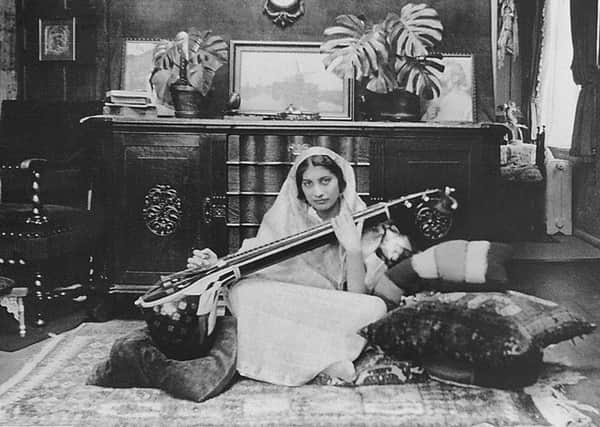The Allies’ secret weapon – the master coder who saved lives behind enemy lines


The first female radio operator to be sent to Nazi-occupied France, Moscow-born immigrant and Sufi princess Ms Inayat-Khan was a master of coded messages.
Armed with a false passport and a pistol she soon became known as “Madeleine of the Resistance”, working in perilous conditions behind enemy lines.
Advertisement
Hide AdAdvertisement
Hide AdShe was captured and tortured for information, but never gave anything away and was eventually executed by the Nazis.
A new exhibition was unveiled yesterday, to mark International Women’s Day, dedicated to promoting Ms Inayat-Khan’s inspiring legacy.
Developed by the Commonwealth War Graves Foundation, the digital experience at Runnymede Air Forces Memorial in Surrey aims to break down pre-conceived notions of Allied contribution.
Born in Moscow in 1914, Ms Inayat-Khan’s family left Russia amid safety fears for Paris, and then London, after the outbreak of the First World War.
Tragedy struck in 1927 when her father died and her mother retreated into grief. At just 13 years old Ms Inayat-Khan had to take responsibility for her family.
When the fighting of the Second World War approached Paris in June 1940, Ms Inayat-Khan joined the Women’s Auxiliary Air Force where she trained as a wireless operator, learning Morse code and working at RAF Abingdon in Oxfordshire.
In October 1942, when Winston Churchill’s famed Special Operations Executive (SOE) was looking for French speakers, she was called for an interview for a new challenge.
The SOE, famously ordered by Churchill to “set Europe ablaze”, offered her the chance to go behind enemy lines as an agent in France. Ms Inayat-Khan signed the Official Secrets Act and began her training, learning physical and military skills like how to shoot, throw grenades, read maps, and fight hand-to-hand without weapons.
Advertisement
Hide AdAdvertisement
Hide AdIn March 1943 she became one of the first women to be sent for specialist SOE signals training. She was taught how to be a wireless operator behind enemy lines, including encoding and decoding messages, how her radio worked and how to fix it herself. Even as she trained as a secret agent, she experienced prejudice while living as a young refugee in London. Some of her instructors were not sure she would make a good agent, worried she was too honest and kind hearted, and could not blend into a crowd.
She and another female agent were ultimately flown to a field outside Angers, about 185 miles south-west of Paris.
Working in perilous conditions behind enemy lines, Ms Inayat-Khan helped hold together the tattered remains of the Paris resistance in some of the darkest hours of the war.
But arrest after arrest left her the only remaining SOE wireless operator in the Paris area.
Just two days before she was due to leave she was arrested by the secret police and tortured.
On the morning of 13 September 1944, Ms Inayat-Khan was killed at Dachau concentration camp. She was 30 years old. In 1949 she was posthumously awarded the George Cross, the highest civilian award for bravery.
Comments
Want to join the conversation? Please or to comment on this article.